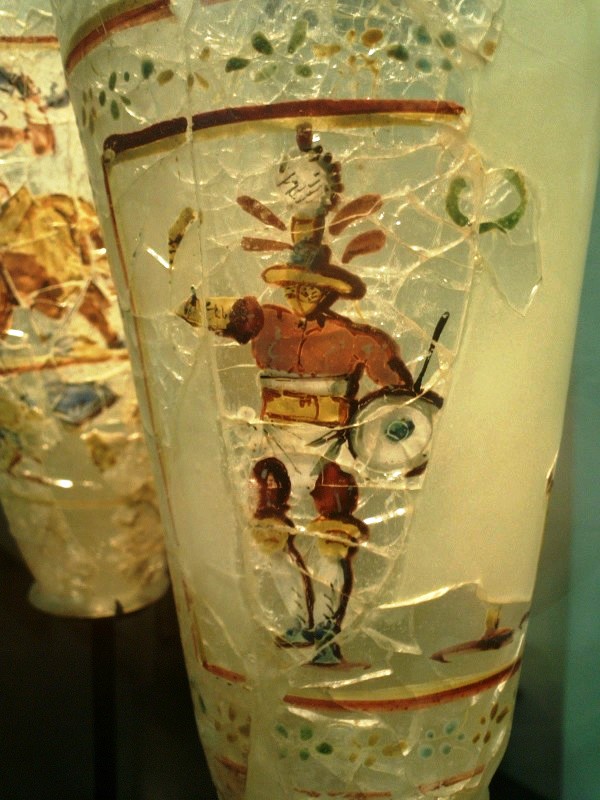Readers are introduced to Professor Christopher I. Beckwith’s text: “Empires of the Silk Road: A History of Central Asia from the Bronze Age to the Present” (available on Amazon.com):
- Author: Christopher I. Beckwith
- Publisher: Princeton University Press
- Date: Reprinted in 2011
- ISBN-10: 0691150346; ISBN-13: 978-0691150345
This book was also recommended reading for Kaveh Farrokh’s Fall 2014 course “The Silk Route Origins and History“.
Educational video entitled “How did the Silk Road Actually Work?” (Source: Knowledgia).
Christopher I. Beckwith’s text provides a comprehensive history of Central Eurasia from antiquity to the current era. This is an excellent text that provides a critical analysis of the Empires of the Silk Road by analyzing the true origins and history of this critical region of Eurasia.
Statue of a foreigner holding a wineskin, Tang Dynasty (618-907) (Photo source: Public Domain).
Beckwith examines the history of the great and forgotten Central Eurasian empires, notably those of the Iranic peoples such as the Scythians, the Hsiang-Nou peoples (e.g. Attila the Hun, Turks, Mongols, etc.) and their interaction with China, Tibet and Persia.
One of the critical land bridges of the Silk Route: the Pamir Mountains which as a 2-way gigantic connector between the civilizations of the east and West (Photo source: Public Domain).
Beckwith outlines the scientific, artistic and economic impacts of Central Asia upon world civilization. Beckwith also tabulates the history of the Indo-European migrations out of Central Eurasia, and their admixture with several settled peoples, resulting in the great (Indo-European) civilizations of India, Persia, Greece and Rome. The impact of these peoples upon China is also examined.
Italian pottery of the 1450s influenced by Chinese ceramic arts; housed at the Louvre Museum, Paris (Photo source: Public Domain).
This is a book that has been long overdue: Empires of the Silk Road places Central Eurasia within the major framework of world history and civilization. It is perhaps this quote by Beckwith which demonstrates his acumen on the subject:
“The dynamic, restless Proto-Indo-Europeans whose culture was born there [Eurasia] migrated across and “discovered” the Old World, mixing with the local peoples and founding the Classical civilizations of the Greeks and Romans, Iranians, Indians, and Chinese…Central Eurasians – not the Egyptians, Sumerians, and so on– are our ancestors. Central Eurasia is our homeland, the place where our civilization started” (2009, p.319).
Second century CE Kushan ceramic vase from Begram with a “Western” motif: a Greco-Roman gladiator (Photo source: Public Domain). The Silk Route challenges the fallacy of a so-called “Clash of Civilizations” – to the contrary, East and West have had extensive adaptive contacts since the dawn of history.









